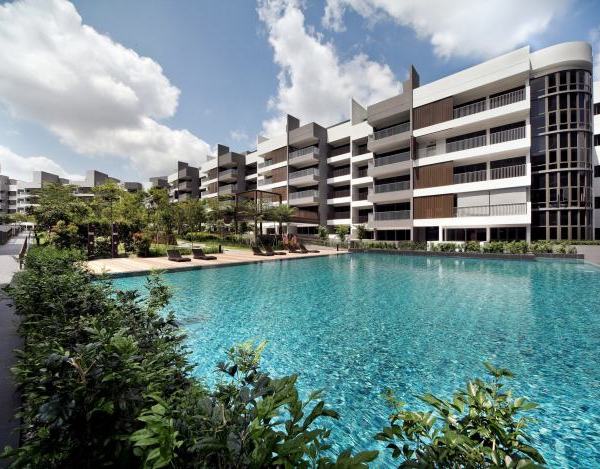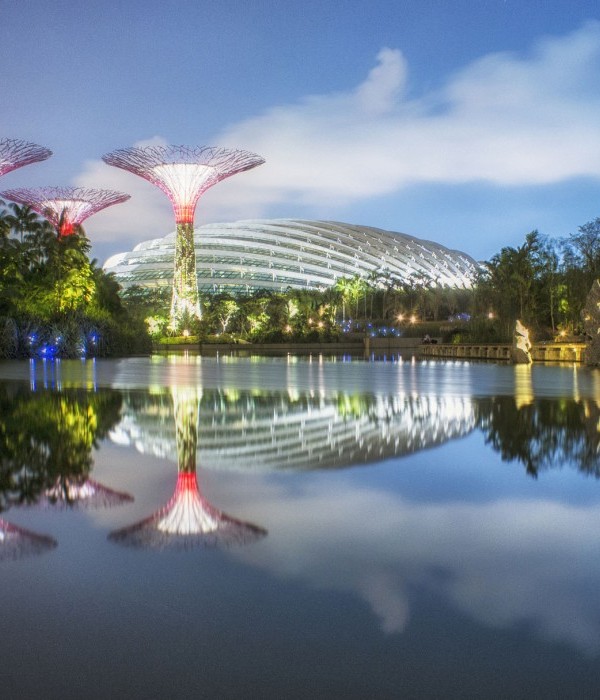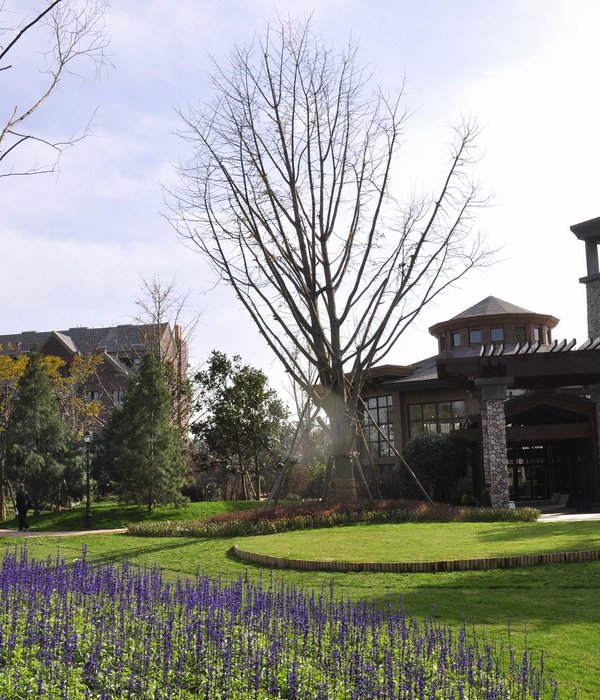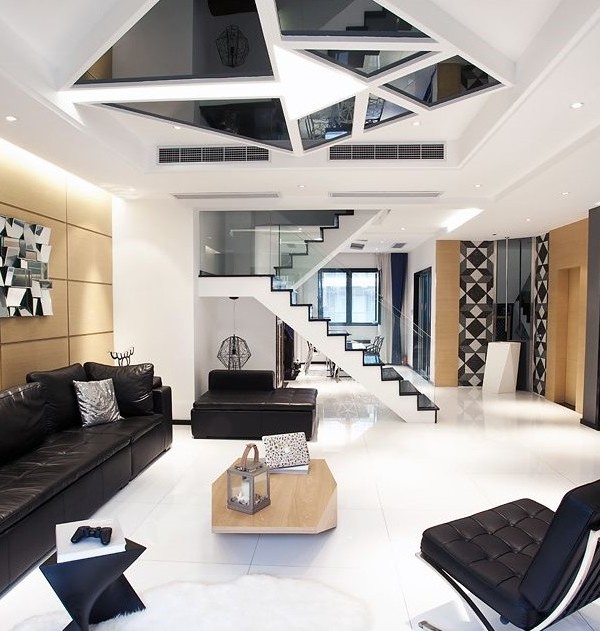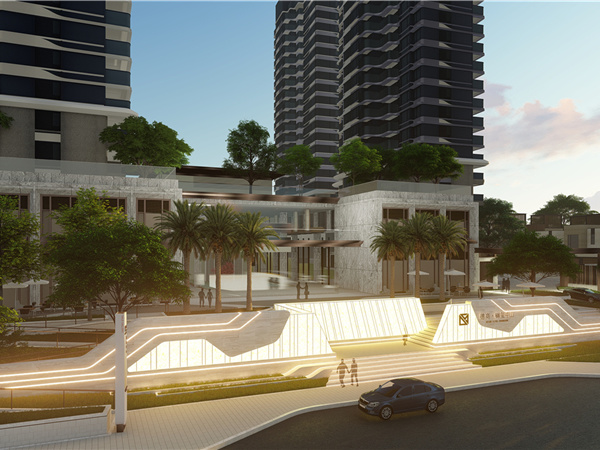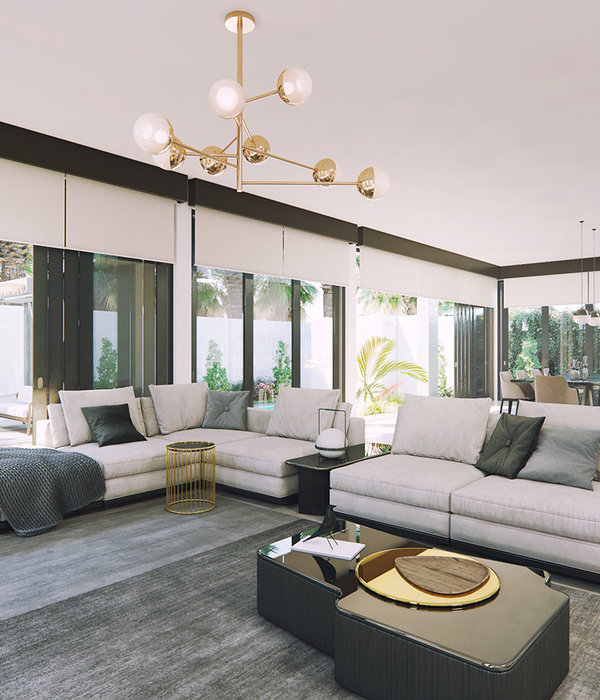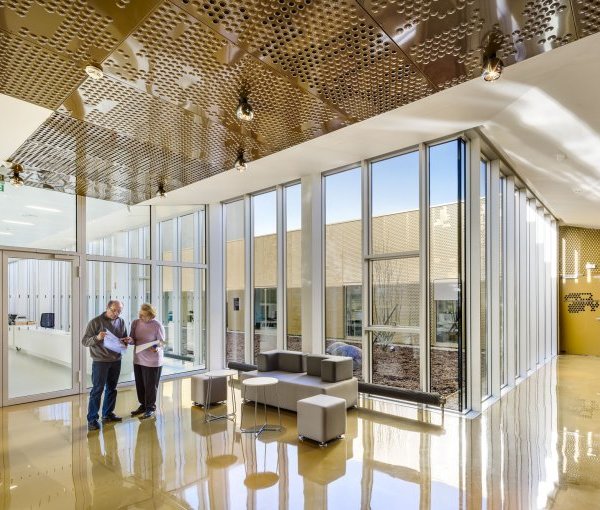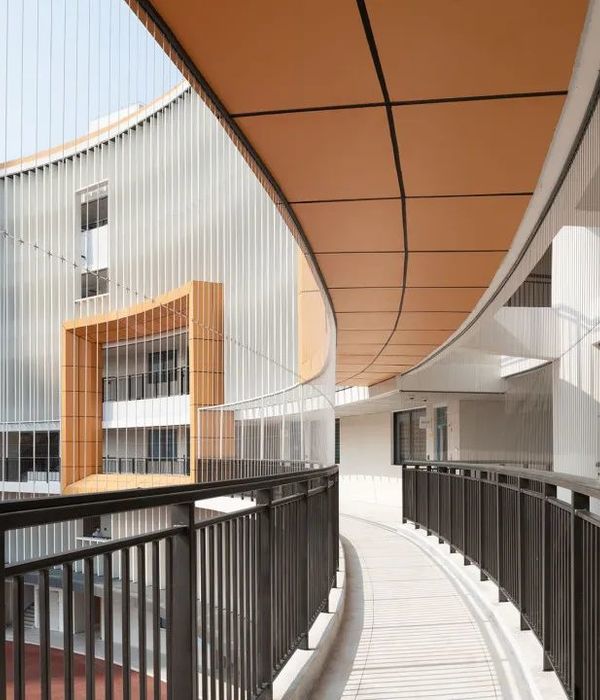该景观方案旨在将现有地块和建筑物(The Hangar)与新的建筑物(The Line)互相联系起来。设计力求在两栋建筑物中间创造一处方便交通的间隔空间,同时也作为一处舒适宜人的绿地,供员工休息。
▼项目概览,overview
The objective of the landscape proposal, was to connect an existing plot and building (The Hangar) with a new one (The Line). The idea was to create an interval space that would answer to the requirements of the circulations between the two buildings but also it would create a pleasant, green area that would be used by the employees as a break area.
▼联系起两栋建筑物的交通空间,an interval space that would answer to the requirements of the circulations between the two buildings
设计首要确定了人行通道和消防通道的位置。在此之后,设计团队将必要的信息录入到图形算法编辑器中,以便根据两栋建筑物的间距自行组织和优化员工所需的交通空间,然后在其中创建出不同大小的绿地。
▼绿地由输入信息的图形算法编辑器生成,the information was introduced into a graphical algorithm editor in order to self-organize and optimize the required circulations
The first thing to do was to define the circulations for the pedestrians as well as for the firemen. After defining these paths, the information was introduced into a graphical algorithm editor in order to self-organize and optimize the required circulations of the employees between the two buildings, depending on the distance between them. Our next intention was to create green areas of different sizes between them.
▼建筑入口处的绿地,green areas alongside with the entrance
▼从地块入口处看建筑,view from entrance to buildings
绿地同时“包围着”建筑物,且根据每栋建筑物的朝向,分低矮植被区和森林区环列四周。每块绿地/沙丘都拥有不同地形,将平坦的灰色场地转换成布满沙丘和小山谷般的绿色景观。集中在地块入口处的一期工程业已完工,项目面积共计14448m²。
These green areas also “hug” the buildings and depending on the perspective of each one of them, they are organized in low vegetation areas and forest areas. Every green area/dune has a different topography, this allows us to transmit the flat grey perspective into a green scenery with dunes and small valleys. It has been completed the first phase of the project, which is concentrated mainly on the entrance of the plot (14448m²).
▼灰色场地转换成布满沙丘和小山谷般的绿色景观,the flat grey perspective was transmitted into a green scenery with dunes and small valleys
▼绿地根据每栋建筑物的朝向环列四周,these green areas “hug” the buildings and depending on the perspective of each one of them
▼每块绿地/沙丘都揭示了不同的地形,every green area/dune represents a different topography
▼低矮植被区,low vegetation areas
绿地或沙丘主要由灌木和多年生草本植物覆盖而成,这些植物四季常绿,但同时拥有微妙的季节性变化,如矮生栒子从春天开花到冬天结出红色的果实。其中还有更多随季节性改变的植物,如马鞭草或滨藜叶分药花,以及一些草,如白茅中的’红色男爵’,可以从春天一直繁茂到秋天,而等到冬天绿叶凋敝,则会凸显出其它品类的常绿灌木,尤其是品种不同、蓝绿各异的刺柏。
▼绿地或沙丘主要由灌木和多年生草本植物覆盖而成,the green areas or dunes with groundcovering plants are composed mainly of shrubs and perennials
The green areas or dunes with groundcovering plants are composed mainly of shrubs and perennials that maintain their appearance throughout the year, with subtle variations such as the flowering of Cotoneaster dammeri in spring or its red fruits in winter. Among these perennial masses, groups of other species with more seasonal interest, as is the case of Verbena bonariensis or Perovskia atriplicifolia, as well as some grasses such as Imperata cylindrica ‘Red Baron’, which bring interest from spring until well into the autumn, to spend the winter low pruned, giving prominence to the evergreen shrubs, especially to the different varieties of Juniperus with their different shades of green and blue.
▼四季常绿的植物,plants maintain their appearance throughout the year
▼开花的植物,plants bring interest from spring until well into the autumn
▼植物拥有微妙的季节性变化,plants with subtle variations such as the flowering of Cotoneaster dammeri in spring or its red fruits in winter
不同品种的橡树(Quercus cerrioides, Quercus cerris, Quercus rubra)在建筑物之前形成了一片小树林景观,而沿街方向的一排桦树(Betula pendula)构成了从室内到室外的过渡景观。
▼沿街方向的一排桦树构成了从室内到室外的过渡景观,a group of birches filters the views both from the interior to this and au contraire on the edge of the street
Different species of oaks (Quercus cerrioides, Quercus cerris and Quercus rubra) form a grove in front of the building, while, on the edge of the street, a group of birches (Betula pendula) filters the views both from the interior to this and au contraire.
▼夜色中的景观,night view
▼建筑物之前的一片橡树,different species of oaks form a grove in front of the building
▼平面图,plan
▼立面图,elevation
Project location (Street, City, Country): C/ Via Augusta, 109, 08184 Palau-Solità i Plegamans, Barcelona, Spain Design year: 2013 Year Built: 2016 Photographer: José Hevia
{{item.text_origin}}

